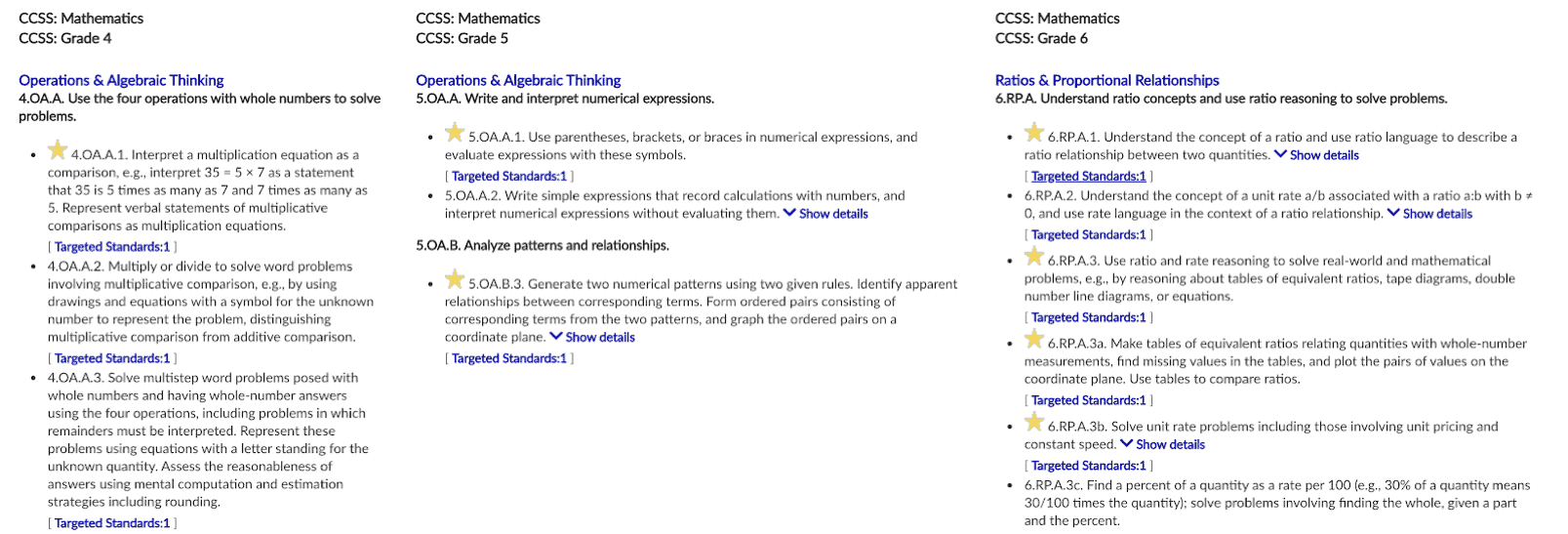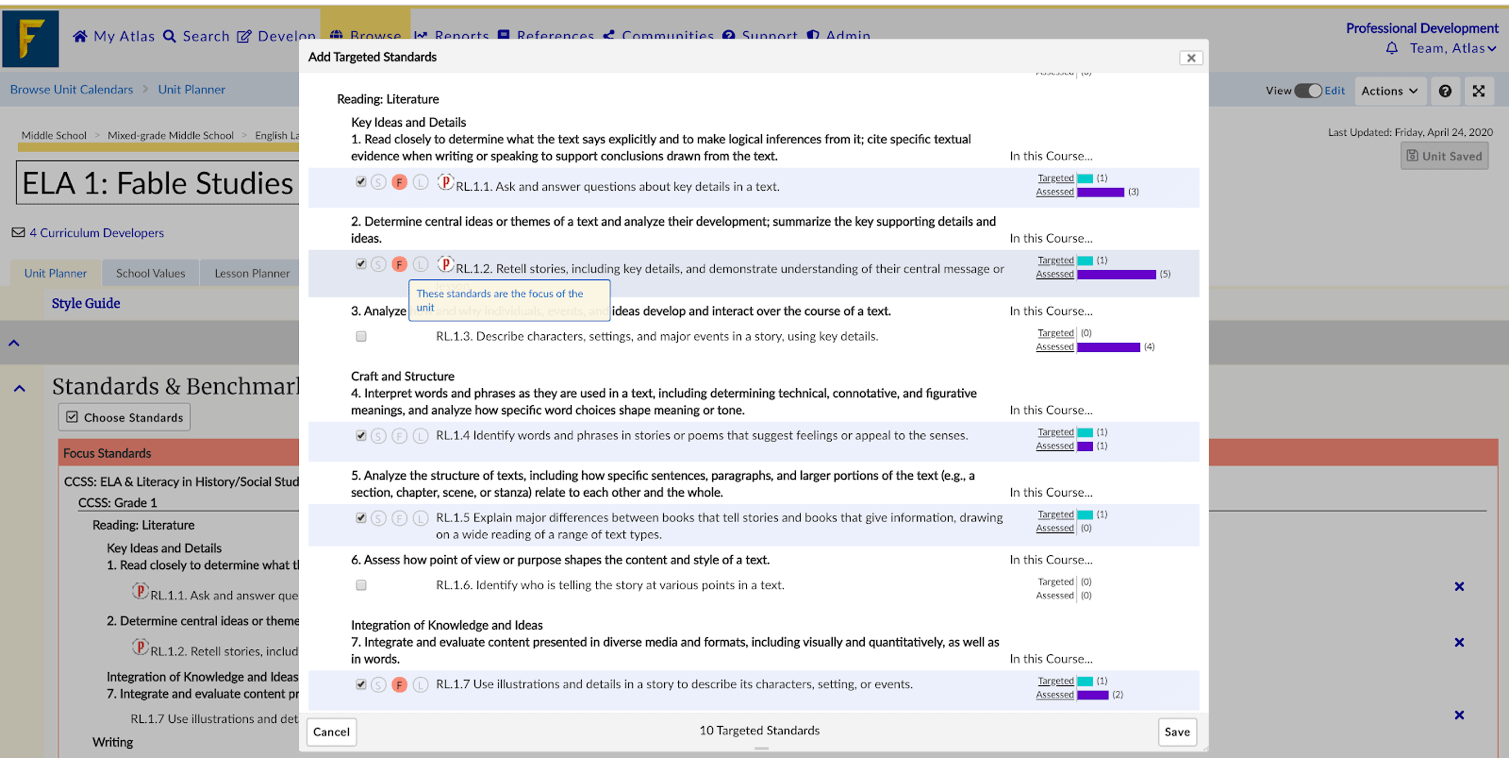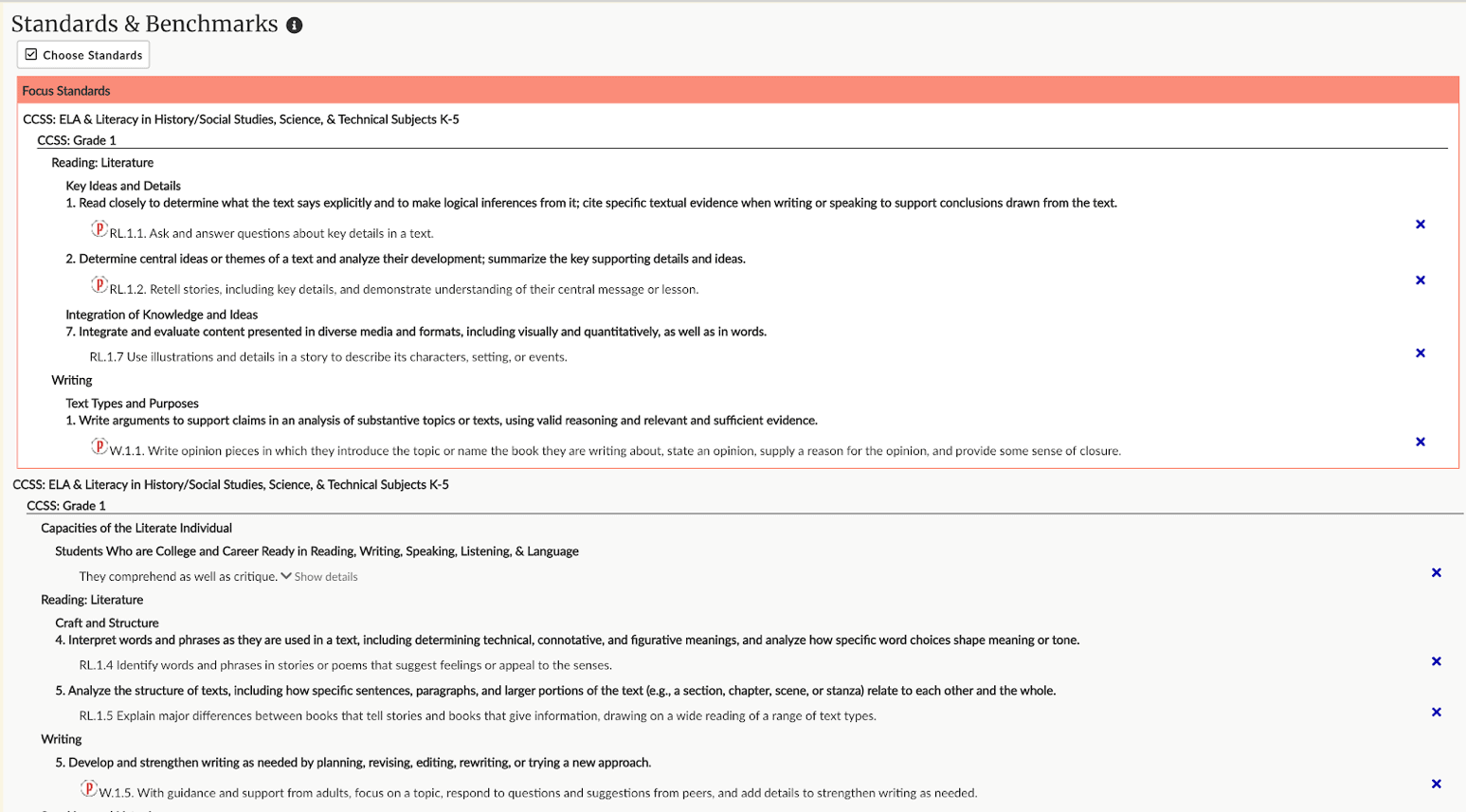Written by Sarah Hanna, Atlas & Amber Villa-Zang , FariaPD
As our world is steeped in change, and we alter our lives in response to the pandemic, teachers and schools are a central component in these adjustments. This period of adaptation includes grappling with hard questions as we try to define what is most essential for student growth, such as:
- What is most essential to our student’s learning?
- How do we prioritize the academic and social-emotional needs of students?
- How do we prepare students for the upcoming academic year?
- How do we track what we emphasized during remote learning?
Priority and Customization
The Atlas curriculum management system provides schools with a way to indicate and document which standards they have determined warrant priority. This process can be done at both the school or district level, as well as at the teacher level.
Prioritizing Standards at the School or District level

At the school and district level, teams can add visual flags within the Standards Editing Tool. This feature gives schools and districts the ability to identify which standards deserve the greatest priority across each subject and grade level. Priority standards, often referred to as power standards, are the learning outcomes that have been identified by educators to be the most important for student growth. When clearly identified, priority standards guide teachers as they develop units of instruction and design learning experiences for students.

Standards Prioritization at the Teacher Level
Once standards have been flagged at a school or district level, they visually guide teachers as they select and target standards for a unit. And when prioritized standards have been selected for a unit, the flags visually anchor the concepts and skills that should have the most emphasis.
As teachers review their unit plans within their course, they have the ability to also flag standards of emphasis at the unit level. Note: This feature requires a system administrator to create and define flags for teachers to select. For example, the standards within a unit could be identified and checked off as “Focus,” “Supporting,” and “Additional” [for directions on how to add flags, click here]. Some schools have created flags specifically for “Remote Learning” so teachers can identify the standards they placed the greatest emphasis on during remote instruction.

Why use School Level AND Teacher Level Priority Flags?
When a school or district prioritizes standards, it’s from a lens that considers the year-long learning goals of a grade band, in connection to how content and skills scaffold across the grades. When a teacher identifies a focus standard within a unit, it indicates how they make the learning target come to life within that specific unit’s timeframe.
And it’s important to note, priority standards might not always be the focus in every unit. By giving teachers the ability to flag standards within units, they are better able to identify which standards address the central learning target in a given unit.

When teachers have the ability to clearly show:
- Where in the curriculum standards are
- When in the school year they are taught
- How in the classroom they are emphasized
It allows for both a big picture and a granular look at how we are teaching concepts and skills. This dual perspective leads to the very conversations that strengthen instructional practices and lead to student growth over time.

